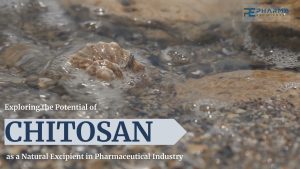3D printing of microencapsulated Lactobacillus rhamnosus for oral delivery

3D Printing is an innovative technology within the pharma and food industries that allows the design and manufacturing of novel delivery systems. Orally safe delivery of probiotics to the gastrointestinal tract faces several challenges regarding bacterial viability, in addition to comply with commercial and regulatory standpoints. Lactobacillus rhamnosus CNCM I-4036 (Lr) was microencapsulated in generally recognised as safe (GRAS) proteins, and then assessed for robocasting 3D printing. Microparticles (MP-Lr) were developed and characterised, prior to being 3D printed with pharmaceutical excipients. MP-Lr showed a size of 12.3 ± 4.1 µm and a non-uniform wrinkled surface determined by Scanning Electron Microscopy (SEM). Bacterial quantification by plate counting accounted for 8.68 ± 0.6 CFU/g of live bacteria encapsulated within.
Formulations were able to keep the bacterial dose constant upon contact with gastric and intestinal pH. Printlets consisted in oval-shape formulations (15 mm × 8 mm × 3.2 mm) of ca. 370 mg of total weight, with a uniform surface. After the 3D printing process, bacterial viability remained even as MP-Lr protected bacteria alongside the process (log reduction of 0.52, p > 0.05) in comparison with non-encapsulated probiotic (log reduction of 3.05). Moreover, microparticle size was not altered during the 3D printing process. We confirmed the success of this technology for developing an orally safe formulation, GRAS category, of microencapsulated Lr for gastrointestinal vehiculation.
Download the full article as PDF here 3D printing of microencapsulated Lactobacillus rhamnosus for oral delivery
or read it here
Materials
MRS Broth and Agar were supplied by Condalab (Spain). Sodium caseinate was provided by ACROS Organics (France). Chitosan and mannitol were obtained from Guinama (Spain). Dipotassium phosphate (KH2PO4), pepsin, pancreatin, and trypsin were provided by Sigma-Aldrich (USA). HCl 37 %, NaCl, NaOH and sucrose were supplied by PanReac AppliChem ITW Reagents (Spain). Plasdone™ K-29/32 (poly(vinylpyrrolidone), PVP, Mw 58 kDa) was purchased from Ashland (USA). Glycerol (reagent grade ≥ 99.5%) was provided by AnalaR NORMAPUR® ACS (VWR Chemicals BDH®, USA). PBS (pH 7.4 ± 0.05; 0.14 M NaCl, 0.003 M KCl, 0.01 M PO43-) and PBS-Tween (pH 7.4 ± 0.05; 0.14 M NaCl, 0.0027 M KCl, 0.01M PO43-, 0.05% Tween™️ 20) were supplied by Medicago (Sweden).
Pablo Rosas-Val, Masoud Adhami, Ana Brotons-Canto, Carlos Gamazo, Juan M. Irache, Eneko Larrañeta, 3D printing of microencapsulated Lactobacillus rhamnosus for oral delivery, International Journal of Pharmaceutics,
Volume 641, 2023, 123058, ISSN 0378-5173, https://doi.org/10.1016/j.ijpharm.2023.123058.
Read more on Chitosan as a pharmaceutical excipient here:


